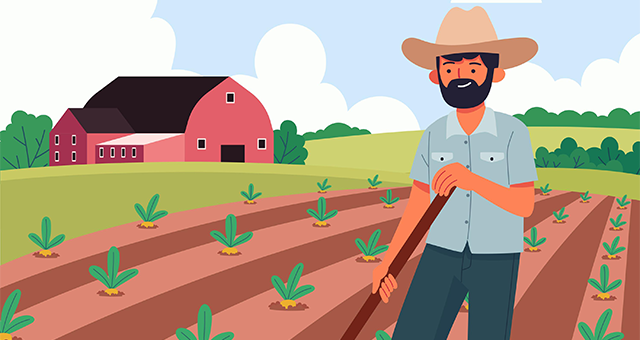
Summer Is Almost Over- Get Your Yard Ready For Fall
Fall officially starts on September 22nd, so there is plenty of time to tend to your yard and do some end-of-summer maintenance. This is also the right time to prepare your garden too. Maintaining your yard during late summer will directly impact what it will look like in spring.
Here are some tips on how to keep your yard healthy and well-prepared for fall.
1. CONTINUE MOWING
Many homeowners decide not to mow when the grass is not growing fast. However, according to experts, you should keep mowing all through summer and fall. Mowing will not only give your yard a beautiful, uniform appearance but will also stimulate the health of the grass.
Improper moving may cause lawn problems so keep your lawn at the usual length or a bit shorter to encourage healthy root growth that can withstand the harshness of winter.
2. Control the Weeds
When weeds take over your yard they affect the appearance and quality of your lawn. They also compete with grass for nutrients, space, and water. Do not just cut the head of weed with a lawnmower but pull it out from the root by hand or with garden tools. You should also consider applying weed preventers and a layer of mulch. This will help keep perennial broadleaf weeds like plantain and dandelions away.
3. Aerate the Soil
During summer your yard’s soil becomes more compacted. This will prevent water, oxygen, and nutrients to reach the grassroots. Late August or the beginning of September is the ideal time to aerate your soil and prevent it from being covered with thatch.
Use a machine that has hollow metal tubes or prongs to plug soil from your yard. Make sure to avoid spike-type devices that only punch holes in the grass. An aerated yard may look a little choppy with dirt and plugs of soil everywhere. But, come spring and you will be rewarded with a lush and beautiful yard as it had adequate nutrients and energy supply to help it withstand the harsh conditions.
4. Seed the Bare Parts
In case there are thin or bald spots in your yard they will make it look patchy and bald. They also encourage weed growth, which is why over-seeding them is important. Seeding can begin in late summer (mid-August) and should be completed by early fall (Septemeber30). Before applying seed to the bare spots, use a rake to scratch the soil loose. Put the seeds and press the ground over them down. Also, apply a lawn repair mixture and water them adequately for a fortnight. This will ensure that the seed gets established and the grass grows evenly.
5. Carry On Watering Your Yard
With the weather changing and the rain increasing watering your yard may fall off your priority list. Although there is more rain and less evaporation it may not be enough to keep the roots hydrated. So, watering your yard till at least the end of October is a great way to provide the hydration it needs and keep the grass strong and healthy. You should also check the seeded areas and water according to the instructions for a healthy crop of grass.
6. Fertilize
Fertilizing your yard in late summer and early fall will aid in root growth and your grass will have a reserve of nutrients that it can use in spring. You may need to use a different type of fertilizer than the one you use in fall and winter. Your local home improvement center can help you choose a mixture that is ideal for your grass type.
7. Trim Branches and Cut Back Shrubs and Bushes
Presumably, some of your plants and trees must have been flourishing since spring making your yard look beautiful and cool all summer. However, before fall comes you should trim the branches and overgrown spots that look unhealthy. Also, cut back bushes and shrubs. This will help them grow back fuller next year. Plus, you will have fewer leaves to clean up when the weather turns colder. Deadheading flowering plants will also promote more flowering on them the next year.
8. Start Planting Your Flower & Vegetable Garden
There are many types of flowers and plants that flourish in the fall. You can either make a trip to the nursery or look up online to find out what to plant so that your garden looks spectacular with the bright colors in September and October. You can also have a fall vegetable garden with veggies that thrive in fall temperatures like kale, carrot, broccoli, and beets.
When you keep these eight tips in mind you will not only enjoy a yard that looks beautiful throughout the fall but also perform well- come spring next year.


